Future-proof Your Customer Data Infrastructure with Destination Actions
Time to read: 4 minutes
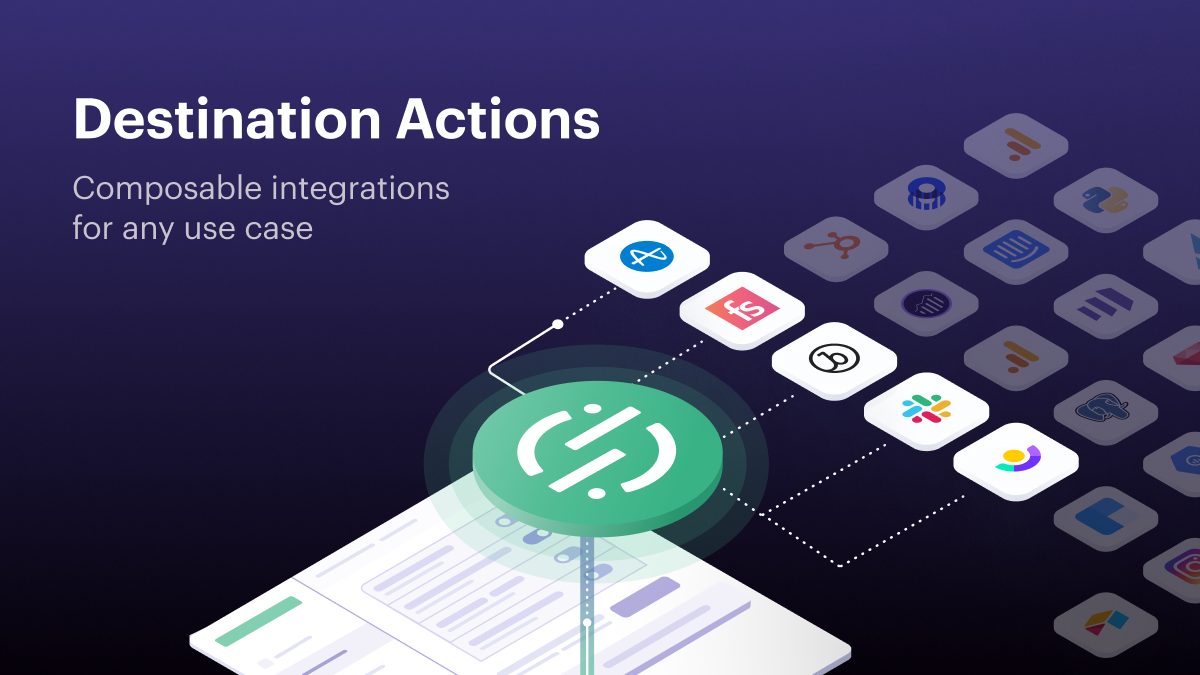
This post originally appeared on the Segment blog.
Now more than ever, customers expect personalized, integrated, and frictionless digital experiences - and it’s rapidly changing how businesses build and adapt their customer data infrastructure.
Therefore it’s no surprise that businesses are demanding solutions that provide more flexibility, visibility, and control over how they collect and integrate their customer data.
Achieve your goals today and adapt for the future
We’ve discussed the shift in how businesses adopt and deploy software, moving away from the “build or buy” mentality to a combined model of implementing customizable infrastructure building blocks that allow for adaptability. Businesses are also becoming increasingly aware that flexibility is crucial to future-proofing their data integration strategy and meeting the needs of customers in this evolving landscape.
Whether you choose to build, buy, or some combination of the two, a future-proof data infrastructure will meet your company’s needs today and offer the flexibility to adapt for the future.
That’s why trends like composability are gaining so much momentum. Composability allows for extensibility and the customization of out-of-the-box features that enable new business scenarios and use cases. According to Gartner, 60% of organizations will seek composability in new application investments by 2023 because monolithic application experiences no longer meet the requirements for continuous business agility.

To help make your customer data infrastructure even more extensible, composable, and adaptable, we built Destination Actions.
Introducing Destination Actions: Adapt to any use case with composable customer data integrations
Destination Actions is our newest framework for building, enabling, and configuring destinations on the Twilio Segment platform.
With Destination Actions, our customers have:
- Easier setup - Destinations Actions eliminates the majority of required settings in the destination setup process by moving hardcoded mappings from code to UI-based configuration.
- Increased transparency - Each partner destination and associated product capability is exposed in a well-defined schema that is visible directly in the Twilio Segment UI.
- Customizability - All settings are made modifiable at both the field level and endpoint level. For example, a user could re-wire a track call to update a user profile in a destination.
Customizability without sacrificing usability
Customer data platforms like Twilio Segment are used across the business by a wide variety of teams, from Engineers and Developers, to Marketers, Product Managers, Data Analysts, and more. These teams work tirelessly to meet the diverse needs of your customers...shouldn’t your CDP do the same?
Destination Actions offers the customizability that developers expect without requiring as much code, so less-technical teams can extend their customer data integrations however makes the most sense for them.
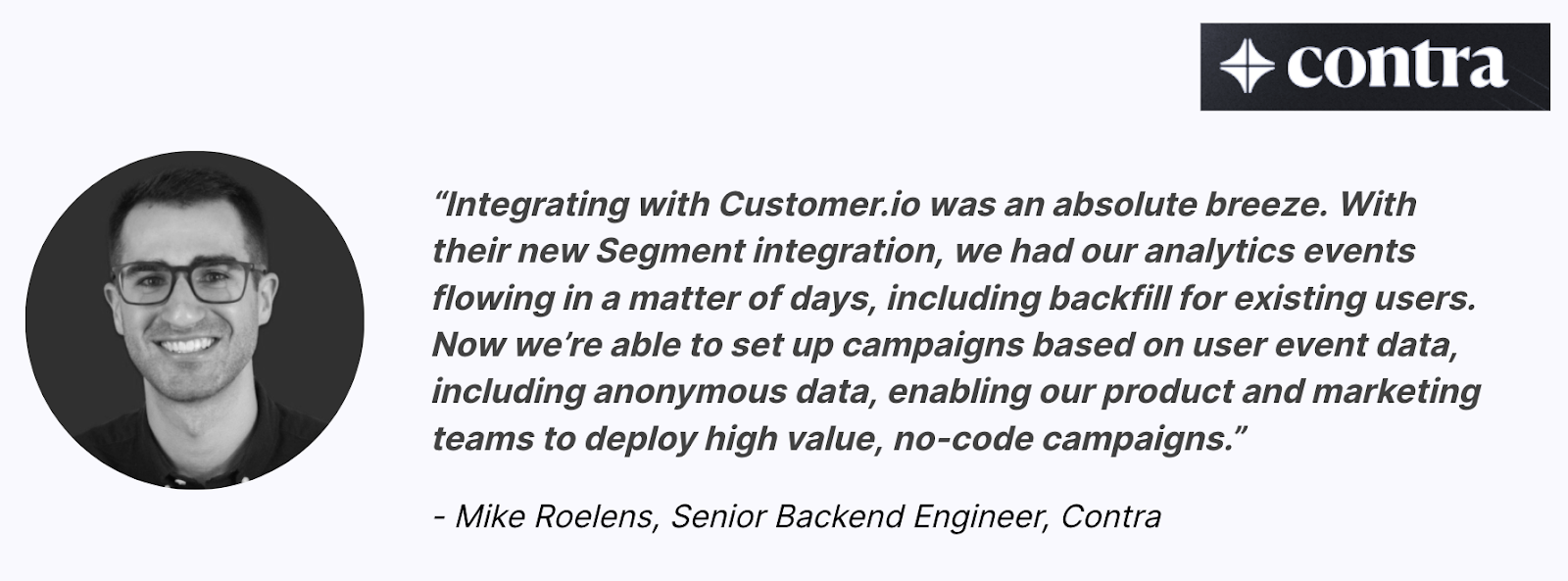
Let’s take a look at an example...
A travel booking company, Fly Inc. wants to use Braze to send targeted emails for their holiday traveler campaign, but the standard configuration doesn’t quite fit its use case.
With Braze’s Actions-based destination, only a few settings are required to get data flowing. Once the user reaches the Mappings screen, they have full transparency and flexibility into how their data is delivered.
In this standard configuration, we're sending events, purchases, and customer traits to Braze, using three different Actions.
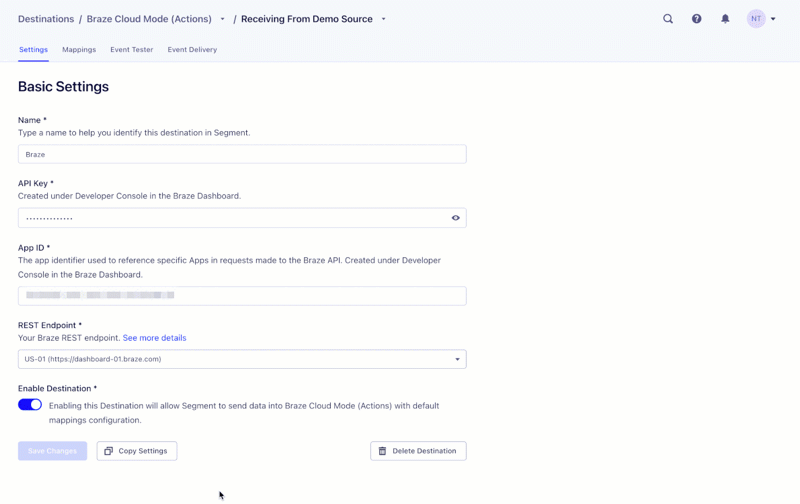
Fly Inc.’s main purchase event is “Trip Booked,” but our Braze classic destination registers purchases as “Order Completed.” By using the new Braze Actions-based destination, they can easily edit this trigger to fit its use case.
What if the campaign requires more personalized targeting? Let's say, for instance, Fly Inc. wants to include people who visit their pricing page, but supporting page calls is not a Braze best practice out-of-the-box.
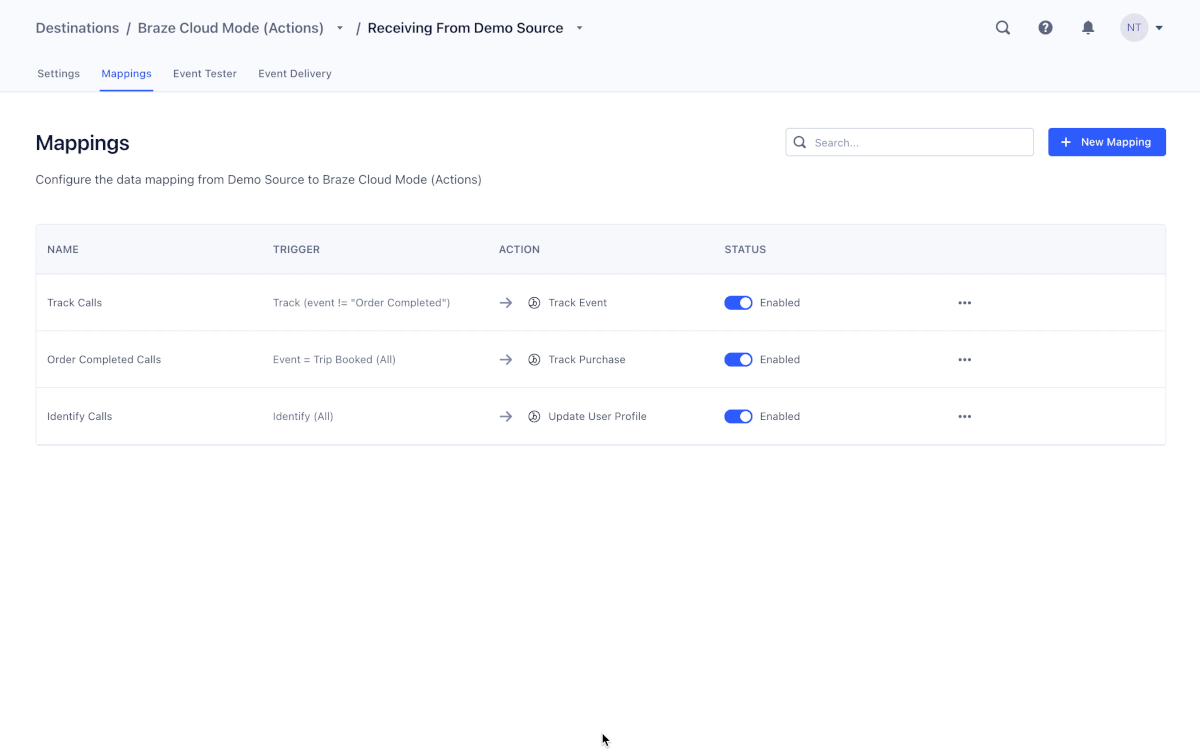
With Braze Actions, the user can add another instance of the Event Action, but this time, trigger the event when the pricing page is viewed. Next, they can edit the mappings to get an event in Braze called “Viewed Pricing.”
This is just one of the many ways that Destination Actions can be used to customize how data is sent to downstream destinations using Twilio Segment.
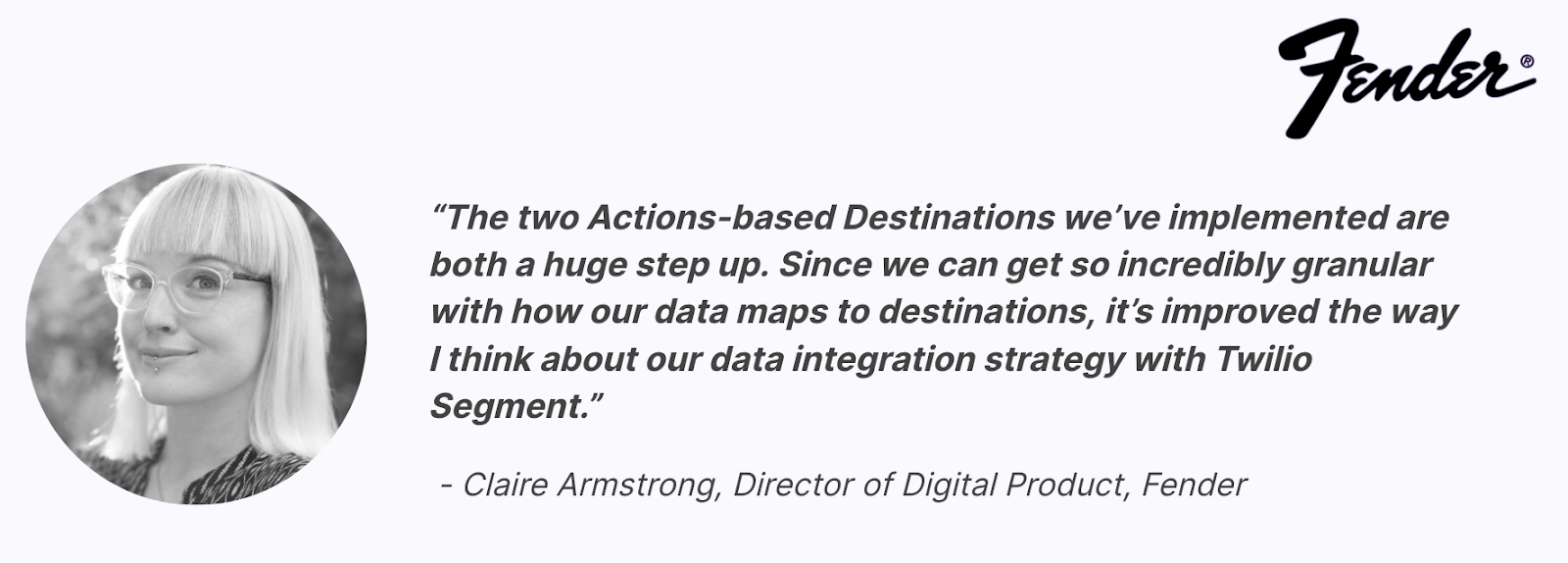
More extensibility in the hands of our partners
Our customers are at the center of everything we do, but on the other side of every outbound message we send sits a partner API with their own customers’ strategies and goals.
Destination Actions empowers our partners to build and own their integrations on the Twilio Segment Platform, and quickly deliver their newest features directly to our joint customers, all without depending on the Twilio Segment team.
Destination Actions delivers two key benefits to our partners:
- Ownership - Destination Actions enables all aspects of a destination to be owned by partners on both Cloud Mode and Device Mode Web.
- Developer Efficiency - Eliminate mapping code and settings-driven conditionals to make the build process much simpler for partner developers.

Want to see what’s under the hood? Hop over to Github for a walkthrough on how one of the Braze actions is built with dramatically less code than our classic integration.
The 6 new Actions-based Destinations
Today, we are excited to highlight the first 6 Action-based destinations that are leading the charge (plus a sneak peek into 3 more coming soon).
Over the course of 2022 and beyond, we’ll be working towards delivering more updated destinations to the Segment Destinations Catalog. If you’re a partner interested in joining the Destination Actions private beta, please sign up here.
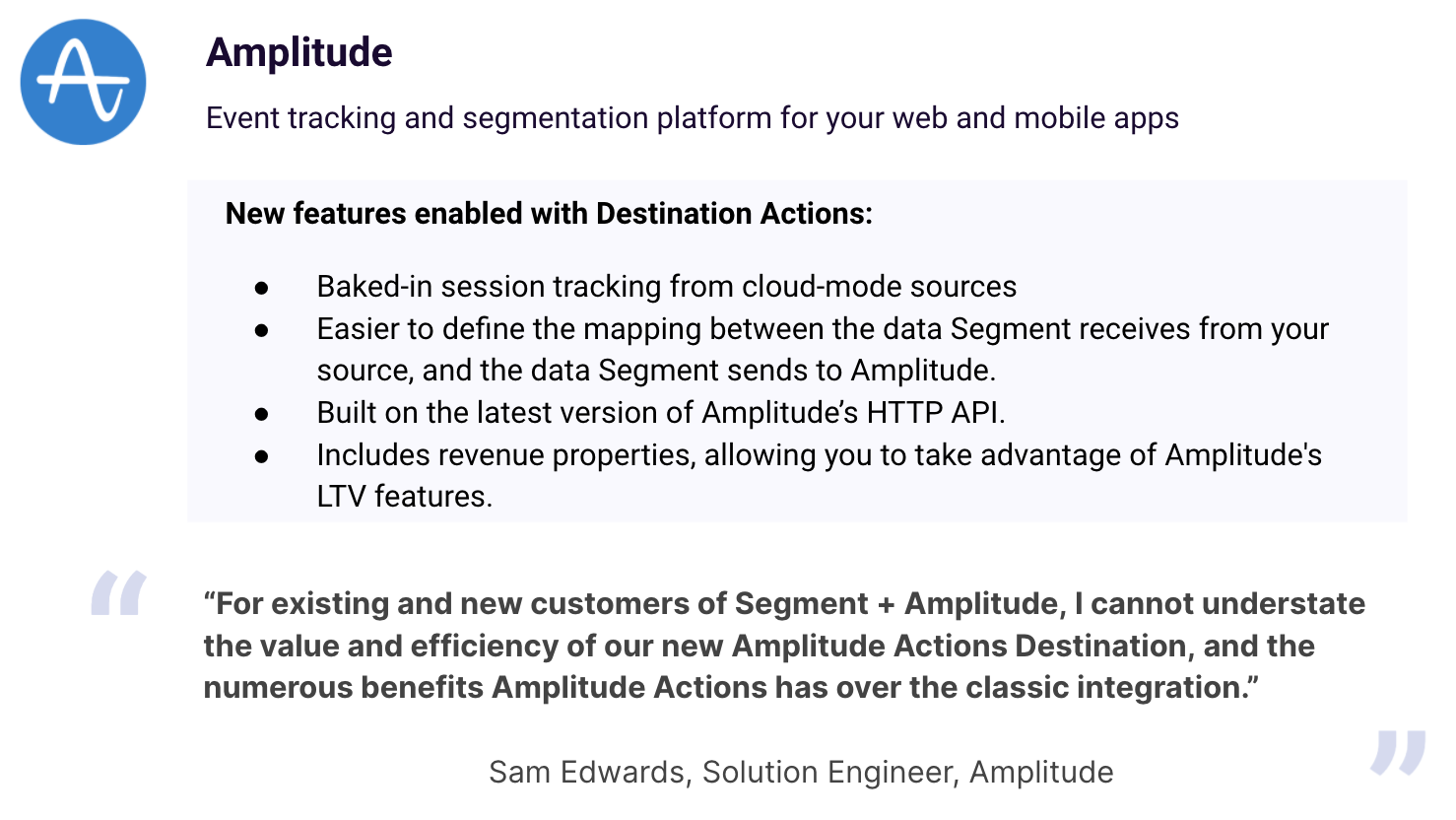
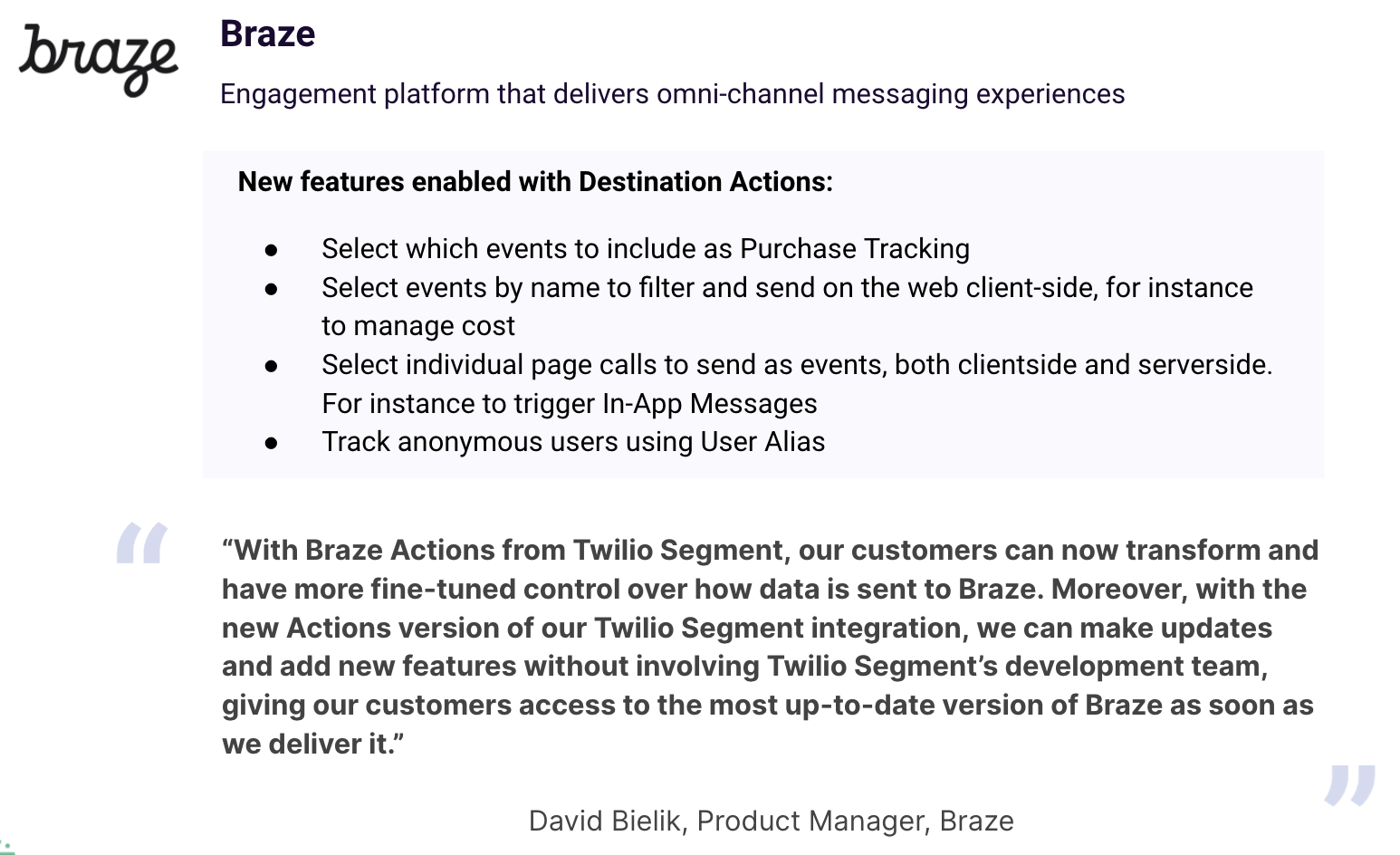
See Braze Web Actions and Braze Cloud Mode Actions documentation
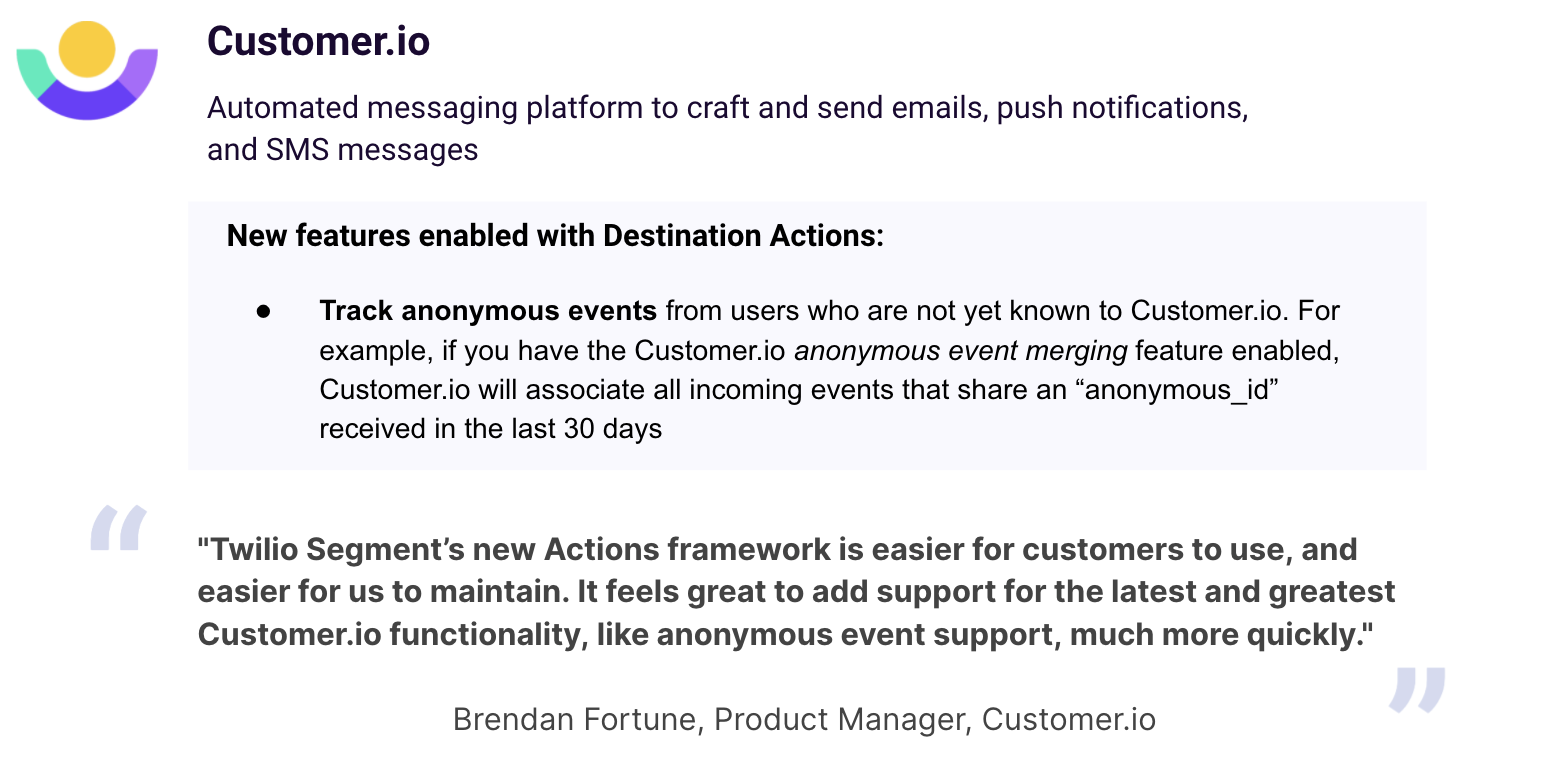
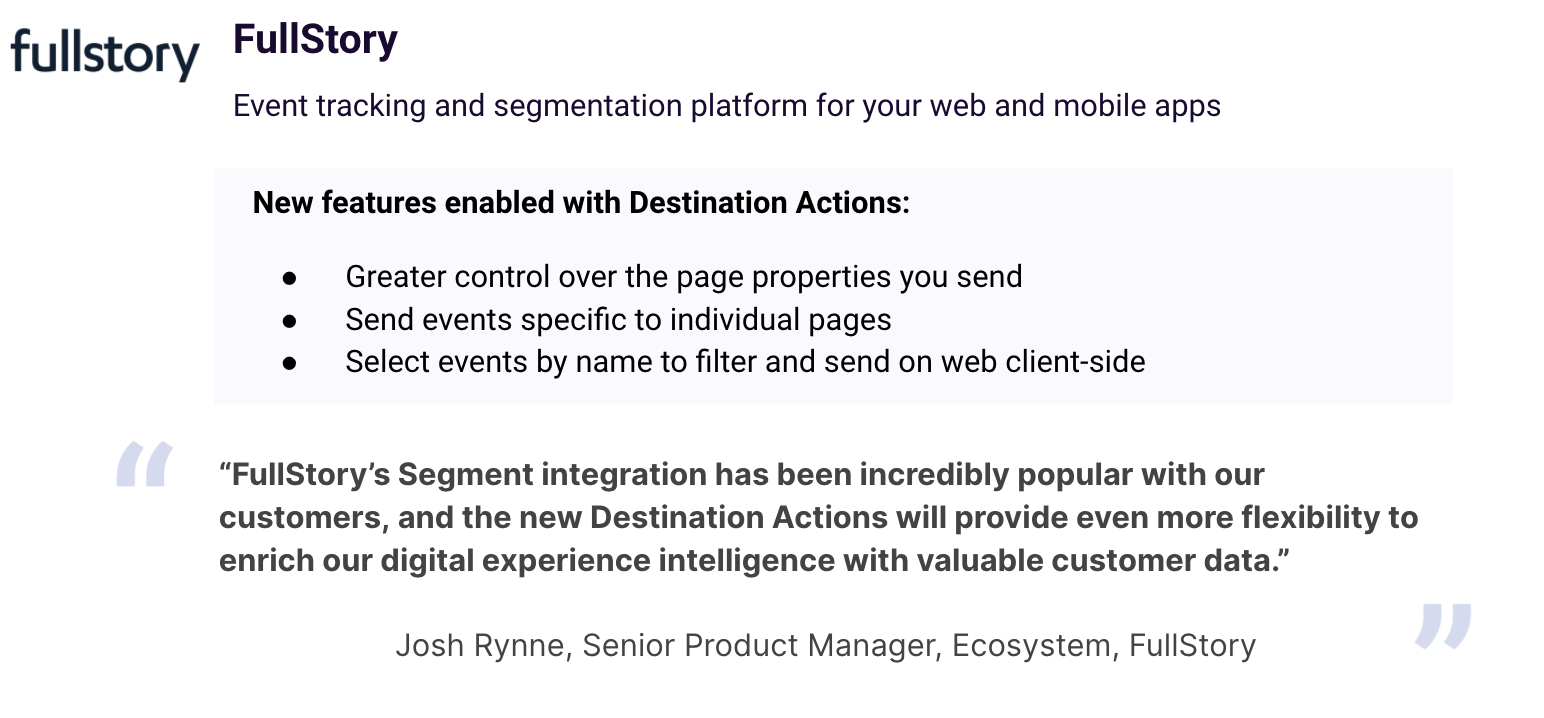
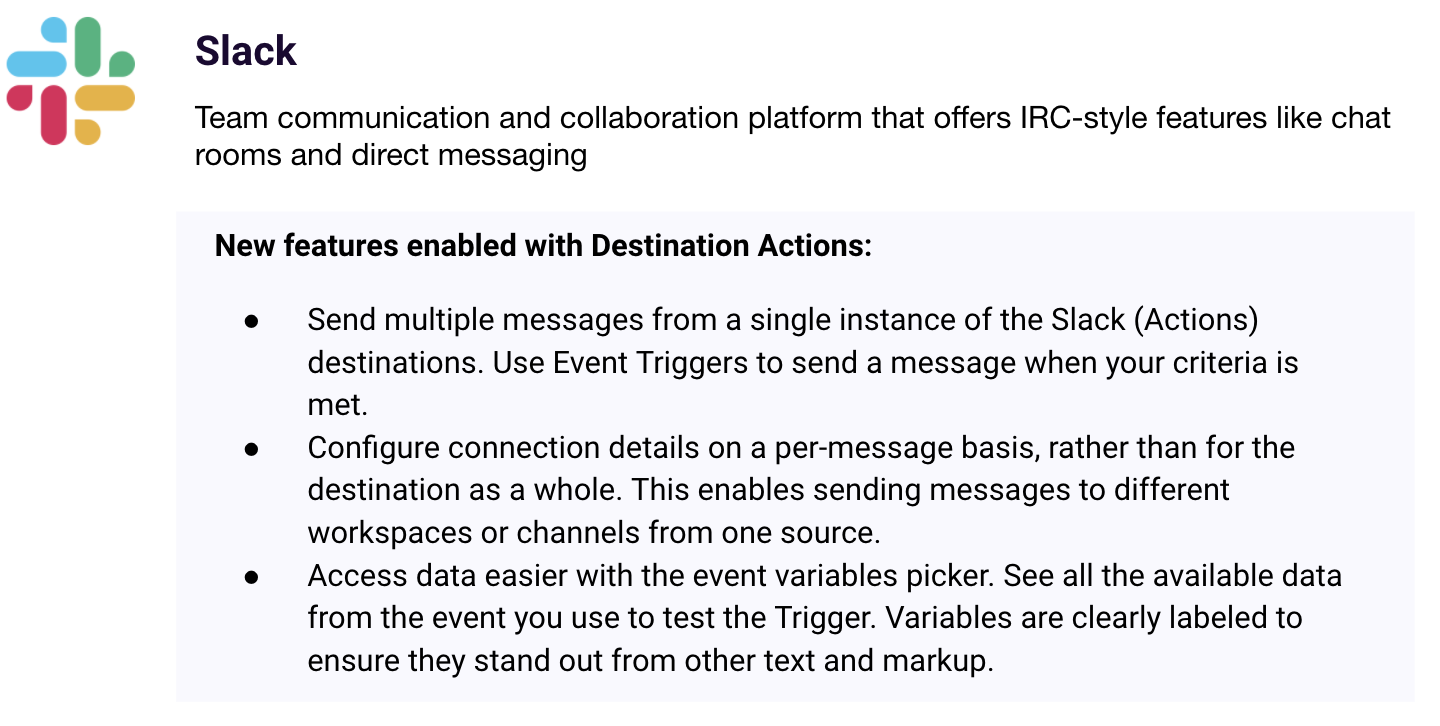
See Slack Actions documentation
And new destinations joining the Actions framework soon to Public Beta…
- Google Enhanced Conversions
- Facebook Conversions API
- TikTok Conversions
- Google Analytics 4
Getting started with Twilio Segment
As the digital landscape and customer expectations continue to evolve, composable and adaptable solutions are a necessary part of building a future-proof customer data infrastructure.
Destination Actions gives developers the customizable building blocks they need to extend the Twilio Segment platform. Along with the other tools included in the Developer Toolkit, it’s yet another step in allowing both customers and partners to build what they need on top of Twilio Segment, the world’s leading CDP.
To start future-proofing your customer data infrastructure, sign up for a free account or request a demo today!
Related Posts
Related Resources
Twilio Docs
From APIs to SDKs to sample apps
API reference documentation, SDKs, helper libraries, quickstarts, and tutorials for your language and platform.
Resource Center
The latest ebooks, industry reports, and webinars
Learn from customer engagement experts to improve your own communication.
Ahoy
Twilio's developer community hub
Best practices, code samples, and inspiration to build communications and digital engagement experiences.

